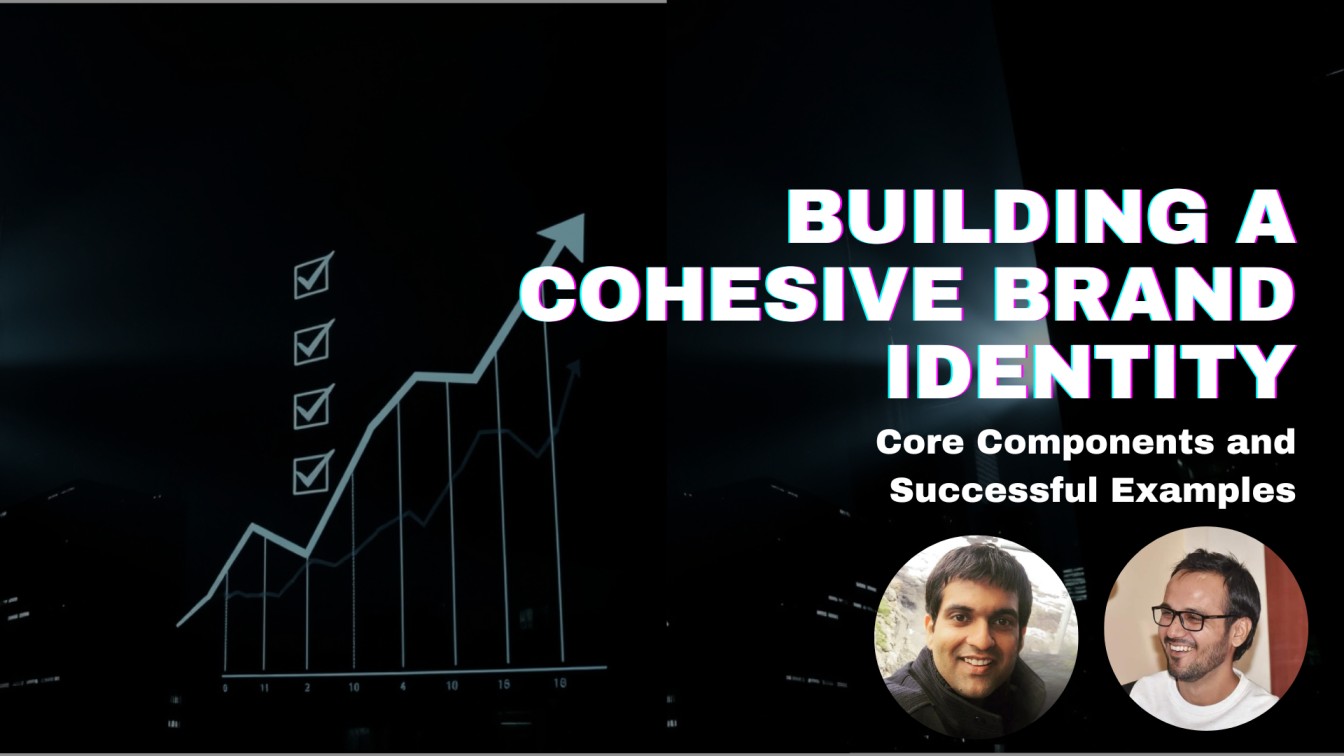
A cohesive brand identity is more than just a logo or a catchy slogan. It’s about creating a unified experience that sticks with your audience and sets you apart in the crowded marketplace. Think of companies like Tanishq or Amul—their brands are immediately recognizable because every detail, from their design to their messaging, aligns perfectly with their values and mission.
In this article, we’ll break down the components of a cohesive brand identity and show you how you can create one for your business. With real-life examples, simple strategies, and actionable tips, we’ll help you build a brand that stands out and lasts.
What Exactly Is a Cohesive Brand Identity?
Simply put, a cohesive brand identity is how your business presents itself consistently across all channels. It’s the sum of your brand’s mission, values, visuals, messaging, and customer experience. When all of these elements align, your audience can instantly recognize and trust your brand.
Having a cohesive identity helps you:
- Build recognition: People will know who you are and what you stand for.
- Create trust: Consistency builds credibility with customers.
- Differentiate yourself: A strong, cohesive brand makes you stand out from competitors.
Example: Look at Amul. Their “Amul Girl” campaigns, quality-focused products, and commitment to cooperative dairy farming all reflect their identity. Amul has stayed true to its values for decades, and every interaction feels aligned with their core mission of providing affordable, high-quality dairy products.
The Key Components of a Cohesive Brand Identity
To create a strong, cohesive brand, you need to focus on several important elements that work together. Let’s take a closer look at each one:
1. Mission and Values
What is your brand’s “why”? Why do you do what you do? Understanding your brand’s mission and values is the foundation for everything else. These elements should guide all decisions, from product development to marketing messaging.
Example: Tanishq, India’s leading jewelry brand, builds its identity on trust, tradition, and quality. Their campaigns emphasize emotional connections, such as celebrating festivals, weddings, and relationships. This focus on authenticity and value is at the heart of their mission and resonates deeply with their audience.
2. Visual Identity
Your visual identity is made up of your logo, colors, typography, and imagery. It’s what people will remember when they think of your brand. These visual elements should reflect your brand’s personality and values—and they should be consistent across all platforms, from your website to your social media.
Here’s what to focus on:
- Logo: A memorable design like Zomato’s bold wordmark.
- Color palette: Stick to a few key colors to maintain consistency.
- Typography: Use fonts that match the tone of your brand.
- Imagery: Whether photos or illustrations, make sure your visual style aligns with your messaging.
3. Brand Voice and Messaging
Your brand voice is how you talk to your audience. It’s the personality behind your words. Whether you’re formal, friendly, or playful, your brand voice should reflect your mission and appeal to your target market.
Example: Fevicol’s brand voice is witty and relatable. Their advertisements, whether print or digital, use humor and everyday situations to convey the strength and reliability of their products. This distinct voice has made them a household name in India.
4. Customer Experience
Your brand isn’t just about what you say—it’s also about what you do. Every touchpoint, whether it’s a website visit, customer service call, or email marketing campaign, should feel like it’s coming from the same brand. Consistency in customer experience strengthens brand loyalty and helps reinforce your identity.
Real-World Examples of Strong Brand Identities
When it comes to building a cohesive brand, Indian brands like Tanishq and Amul are excellent examples.
Tanishq: Trust and Elegance in Every Detail
Tanishq has built its brand around trust, elegance, and Indian traditions. From their exquisite jewelry designs to their thoughtful advertising campaigns, every aspect of Tanishq’s brand reinforces these values. Their stores offer a premium experience, their logo evokes a sense of sophistication, and their messaging always celebrates life’s meaningful moments.
Key takeaway: A cohesive brand identity isn’t just about being recognizable—it’s about making sure your visuals and messaging align with your brand’s core promise.
Amul: India’s Beloved Dairy Brand
Amul’s brand identity revolves around affordability, quality, and humor. Their “Amul Girl” campaigns are legendary, using witty, topical ads to keep the brand relevant for decades. The Amul logo, packaging, and cooperative model consistently communicate their values of community and trust.
Key takeaway: A strong brand identity extends beyond the product—it’s about creating an experience that feels cohesive at every customer touchpoint.
How to Build a Cohesive Brand Identity: A Simple Step-by-Step Guide
Creating a cohesive brand identity doesn’t happen overnight, but it’s definitely achievable with some planning and consistency. Here’s how you can do it:
1. Create a Brand Style Guide
A brand style guide is an essential tool that keeps your brand consistent across all platforms. This document outlines your visual and messaging rules, making it easy for anyone working with your brand to understand how to communicate it.
Include the following in your style guide:
- Logo usage guidelines
- Your approved color palette and fonts
- Examples of your brand voice and tone
- Guidelines for imagery
2. Conduct a Brand Audit
Look at how your brand is currently represented. Are your visuals and messaging consistent? Do they reflect your values? Take note of any inconsistencies and fix them.
Example: Let’s say you run a niche e-commerce store selling handcrafted decor items. If your website feels premium and artistic, but your Instagram posts lack polish, updating your social media to reflect your website’s tone can strengthen your overall brand identity.
3. Align Your Brand with Your Business Goals
Your brand identity should always tie back to your business goals. If your goal is to attract eco-conscious customers, for instance, your branding should emphasize sustainability and environmentally friendly practices in every element, from your product design to your messaging.
Measuring Your Brand’s Impact
Once you’ve implemented your cohesive brand identity, it’s important to track how it’s performing. Here’s how you can measure success:
- Brand awareness: Monitor how often your brand is mentioned on social media or in search engines.
- Customer feedback: Use surveys or direct feedback to understand how your audience perceives your brand.
- Engagement: Track social media likes, shares, and comments to see how well your brand connects with your audience.
Conclusion
Building a cohesive brand identity is an ongoing process, but it’s one that pays off in the long run. When your brand’s mission, visuals, messaging, and customer experience all align, you create a strong, memorable brand that resonates with your audience and stands out in the marketplace.
By using the right strategies, learning from successful brands like Tanishq and Amul, and implementing a clear style guide, you’ll be on your way to creating a brand that’s more than just a logo—it’s an experience that sticks with your customers.

